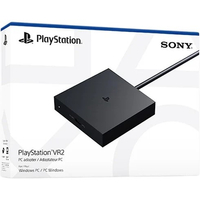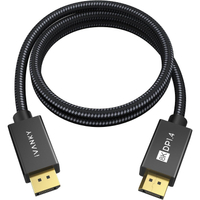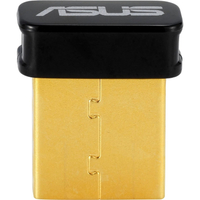The PSVR 2 PC Adapter launches today - here's everything you need to get Steam running on your headset
The PSVR 2 PC Adapter will hit the shelves today

Sony will launch its official PSVR 2 PC Adapter today, opening its VR headset up to a whole host of new experiences across Valve’s Steam VR platform. You’ll need more than the actual device to get your headset up and running, though. From DisplayPort cables to Bluetooth adapters, things are a little more complicated than the plug and play experience we were hoping for from one of the best PS5 accessories on the market.
In short, you’ll need to make sure you’ve got a DisplayPort 1.4 cable handy (Sony doesn’t supply this in the box), a PC or laptop meeting the minimum recommended specs, and a Bluetooth adapter that’s actually going to run with the PSVR 2’s controllers. For some reason, Sony’s Bluetooth difficulties (see PlayStation Portal for more woes) continue even with one of the best VR headsets - so this is a particular sticking point at the moment.
We're rounding up everything you'll need to get up and running with the PSVR 2 PC adapter just below.
1. PSVR 2 PC adapter
Of course, before you go any further you’ll need to pick up the actual adapter. Sony’s PSVR 2 PC Adapter will be available from a range of retailers at a $59.99 / £49.99 price point.
US: PSVR 2 PC Adapter | $59.99 - Check Amazon
The official PSVR 2 PC Adapter will be available today, but at the time of writing we’re not seeing the device available at the usual retailers. Keep checking in for that first wave of stock, though.
UK: PSVR 2 PC Adapter | £49.99 at Very
The UK is first out the gate with PSVR 2 PC Adapter stock this morning - Very has the device listed and ready to order. I expect more retailers will be jumping aboard shortly, though.
2. The right PC
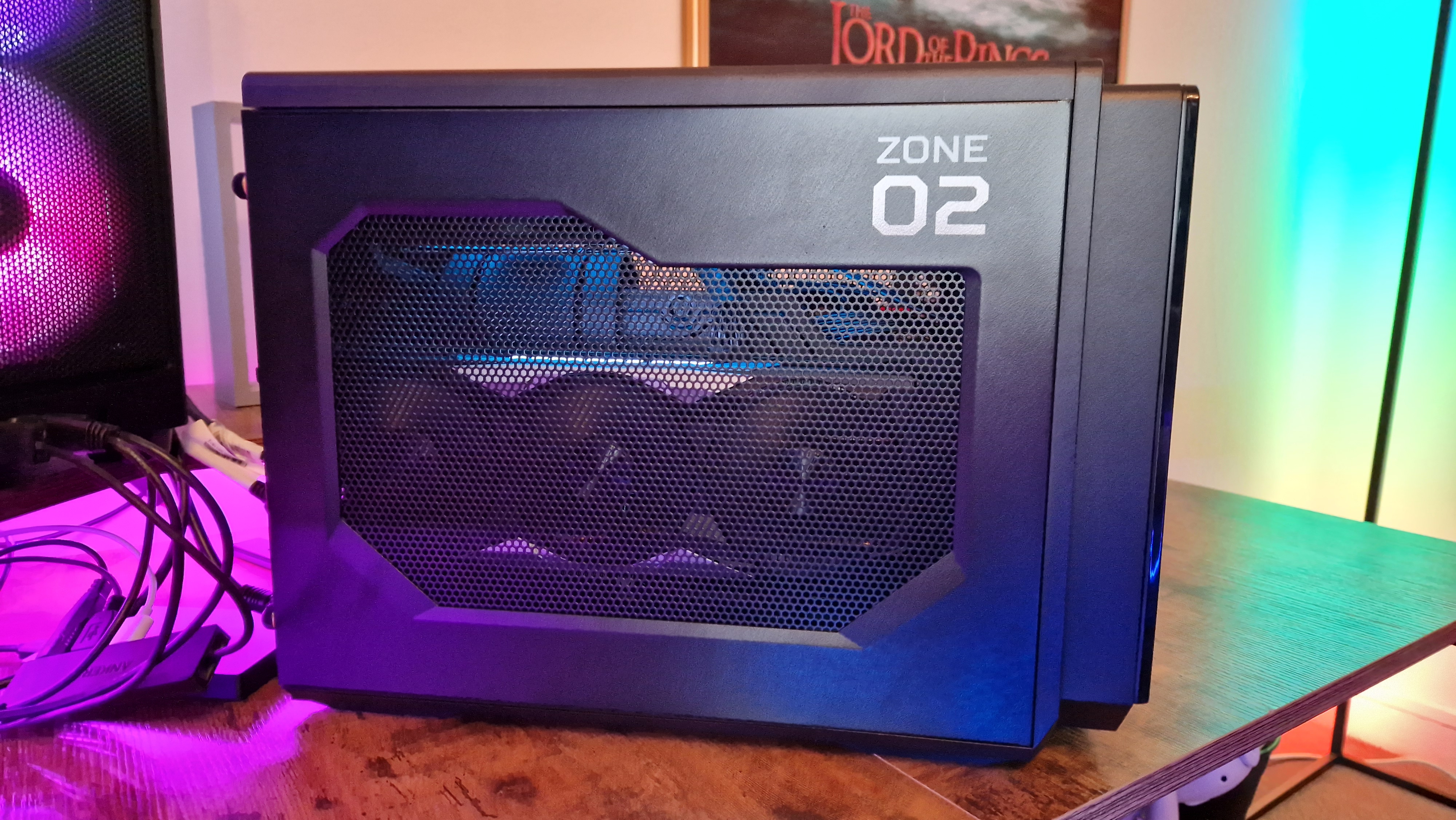
You’ll need a relatively recent gaming PC or gaming laptop to run the PSVR 2 via the official adapter. Sony outlined its base recommendations in a recent blog post.
| Header Cell - Column 0 | Minimum | Recommended |
|---|---|---|
| Processor | Intel Core i5-7600 / AMD Ryzen 3 3100 | Not provided |
| RAM | 8GB | Not provided |
| GPU | Nvidia GeForce GTX 1650 / AMD Radeon RX 5500XT or 6500XT | Nvidia GeForce RTX 3060 / AMD Radeon RX 6600XT |
Sony’s minimum recommended specs are conservative, with the Intel Core i5-7600 / Ryzen 3 3100 CPU and GTX 1650 / Radeon RX 5500 XT / 6500 XT estimates looking easily doable for most players. However, for optimal performance, it’s worth noting that you’ll want a machine running at least an RTX 3060 or Radeon RX 6600 XT. Any mid-range gaming PC or laptop produced in the last four years will generally be fine.
If, however, you’re at the older end of that spectrum it’s worth checking your RAM. 8GB is Sony’s minimum requirement, but a good few Steam VR titles benefit massively from the extra overhead 16GB provides. Some cheaper gaming laptops and PCs would have been shipping with 8GB RAM a few years ago - a practice that has been pretty much eradicated these days. 8GB might be a good benchmark, but in my experience you’ll want to make sure you’ve got a bit more memory to play with.
Sign up to the GamesRadar+ Newsletter
Weekly digests, tales from the communities you love, and more
3. DisplayPort 1.4
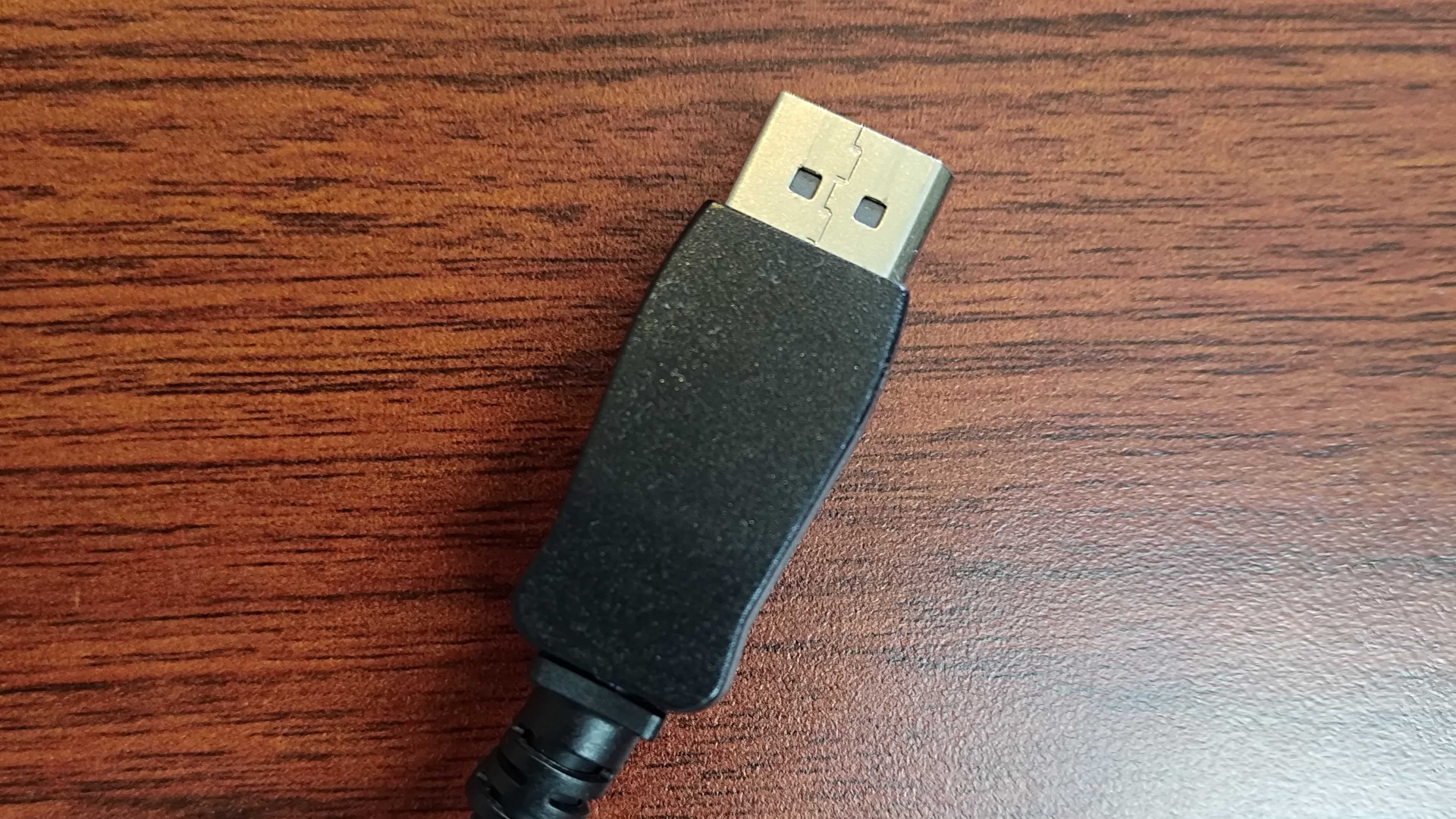
Next you’ll need to actually connect the adapter to your gaming PC or gaming laptop. That means first checking that your rig supports DisplayPort 1.4. In general, Intel machines released after 2021 (with Intel’s 11th generation processors) are a safe bet for DisplayPort 1.4 - just check for the logo next to the port in question (or a USB-C port on a laptop) to make sure your machine supports the tech. If you’re unsure, double check with your manufacturer’s specs page; the version of DisplayPort will be listed in the ports / connections section.
Once you know you’re good to go, you’ll need to pick up a cable. It’s worth investing here - the length, speed, and coating of the cable can all have an impact on your overall experience. Longer options can run the risk of slowing things down, lowering the picture quality, while cheaper rubber cables can quickly degrade over time. They’re not pricey, so it’s pretty easy to pick up a solid piece of wire. I’d recommend capping your search at around 6ft of cable, and if your setup allows for it, even less. Ivanky’s 3.3ft DisplayPort 1.4 cable will get you there for just over $15 at Amazon, with speedy 4K 144Hz transfers and a durable braided design. The 6.6ft model goes just over the recommended upper limit for cable length, but if you have a tricky setup it might be necessary (and it’s currently on sale for just $7.19 at Amazon).
Ivanky DisplayPort 1.4 cable 3.3ft | $15.59 at Amazon
3.3ft is perfect for a smaller setup as you won’t risk degrading your image quality with a longer cable. This Ivanky model is well-respected, offering high speeds and a robust build.
6.6ft: $15.99 $7.19 at Amazon
If you’re planning on using the PSVR 2 PC Adapter with a gaming laptop, you’ll likely need to look into a DisplayPort 1.4 USB-C cable. Very few laptops ship with a full DisplayPort connection, but models from the last couple of years (again, check for the logo next to your USB-C ports) will offer 1.4 compatibility.
Ugreen USB-C to DisplayPort 1.4 3.3ft | $23.99 at Amazon
Much like with a standard DisplayPort cable, shorter is always better. This 3.3ft cable does come in a 6.6ft form factor for a similar price should you need it, but with a 4K 240Hz connection it’s more than fast enough for PSVR 2.
A Bluetooth adapter… maybe
There’s a familiar hitch in Sony’s plan, a villain we’ve met before. For some reason, the brand still struggles with easy Bluetooth implementation, with some early reports from the folks over at Eurogamer suggesting that the PSVR 2’s controllers are a little picky when it comes to which Bluetooth adapters they’ll work with. Sony has a list of four Bluetooth adapters that its system has been running with during its own testing (though still notes on this page that "operation is not guaranteed." I’d wait this one out - grab your PSVR 2 PC adapter and DisplayPort cable, and see if your system’s pre-existing Bluetooth adapter works with the controls. If it doesn’t, two of Sony’s seemingly confirmed-it-works recommendations are easily available at Amazon.
TP-Link UB500 | $14.99 $12.79 at Amazon
This plug in Bluetooth adapter is Sony’s go-to for the PSVR 2 PC system, a cheap and cheerful Bluetooth 5.0 dongle that simply slots into a free USB-A port.
UK: £11.85 at Amazon
Asus USB-BT500 | $19.99 $18.89 at Amazon
Sony has also been running the PSVR 2 using the Asus USB-BT500. It’s a little more expensive than TP-Link’s option, but does all the same stuff. If you don’t get on with the model above, this is your next port of call.
Once you’ve got everything in hand you’re ready to go. Simply connect all the pieces, rev up the PSVR Steam app, pair your controllers and get playing. The PC experience does differ slightly from PSVR 2’s native PS5 support. Sony has already stated there’s no eye-tracking technology at play here, though foveated rendering is still available. The system also drops HDR, haptic feedback, and the controllers’ adaptive triggers. Rumble, see-through view, 3D audio (though not via Sony’s Tempest engine), and the system’s full 4K resolution all remain intact.
Playing for Meta’s team? You’ll find our full guide to all the best Meta Quest accessories available now. Or, take a look at the best PS5 controllers and best PS5 headsets for more Sony gear.

Managing Editor of Hardware at GamesRadar+, I originally landed in hardware at our sister site TechRadar before moving over to GamesRadar. In between, I've written for Tom’s Guide, Wireframe, The Indie Game Website and That Video Game Blog, covering everything from the PS5 launch to the Apple Pencil. Now, i'm focused on Nintendo Switch, gaming laptops (and the keyboards, headsets and mice that come with them), PS5, and trying to find the perfect projector.
